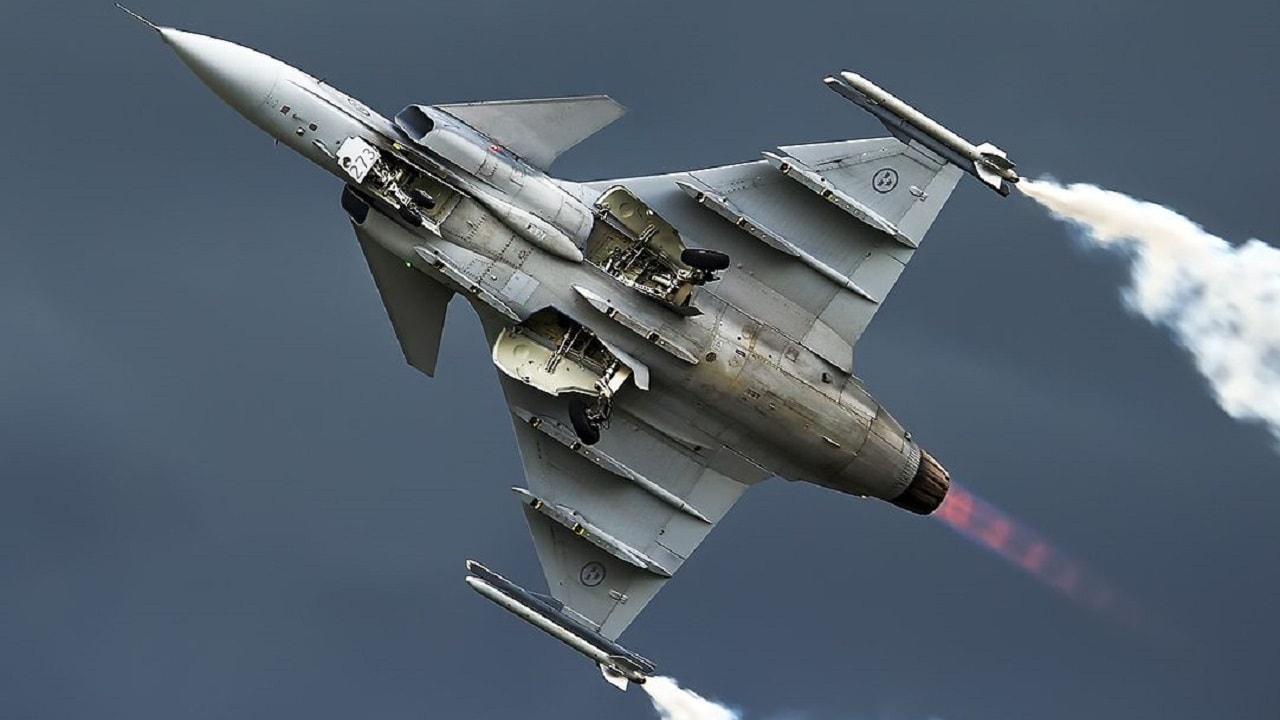At the end of 2022, Swedish defense giant Saab Aerospace finalized an agreement with the Swedish Defense Material Administration to ensure the longevity of the JAS-39 Gripen fighter jet.
Sweden’s premier fourth-generation multi-role fighter is capable of conducting ground attack, reconnaissance and interception. The formidable airframe is widely considered to be inferior only to the F-35 Lightning II.
The Origin Story of the Gripen
The JAS-39 Gripen was born out of Sweden’s need to upgrade its fleet of Saab 35 Draken and Saab 37 Viggen fighters.
While the Swedish government looked at acquiring foreign fighters including F-16s, F/A-18s and Mirage 2000s, they opted to stick with a homegrown Saab jet.
The primary requirements of the Gripen design included short-field ability, which could enable “defensive dispersed basing” in the event of an invasion.
The aircraft would be spread far and wide to prevent the loss of multiple airframes in one coordinated strike. Maintaining multiple airfields is difficult, however, so the Gripen needed to be able to land on strips as short as 2,600 feet.
JAS stands for Jakt, Attack, och Spaning, Swedish for air-to-air, air-to-surface, and reconnaissance, which were the three roles envisioned for the Gripen by the Swedish government. Additional considerations for the design were increasing its range and payload while decreasing its size from previous Saab jets.
The resulting JAS-39 Gripen is a single-seat, fly-by-wire, mach-capable aircraft — a dual-seat model was added later.
Following design and testing that began in 1979, the first prototype Gripen was unveiled in 1987. Problems with the fly-by-wire system delayed the Gripen, which finally entered service with the Swedish air force in 1997.
Gripen Partners and Exports
British Aerospace teamed up with Saab in 1995 to aggressively market the JAS-39 Gripen as an export fighter.
This partnership first saw success in 1999 when Hungary and the Czech Republic acquired Gripens after entering NATO. South Africa soon followed suit, procuring 26 Gripens in that same year.
Saab’s major success came in 2014 when Brazil agreed to purchase 28 JAS-39 Gripen E, the latest model of the aircraft. Boasting major upgrades to avionics and electronic warfare capabilities, the E marks a major step forward for the Gripen.
Its low price tag and operating costs have made it a contender in multiple markets around the world. However, concerns about its operational capabilities have led to several countries going with U.S.-made fighters instead.
JAS-39 Gripens for Ukraine?
Earlier this year, reports claimed that Ukraine had requested JAS-39 Gripens from Sweden for use in its conflict with Russia. Its ability to land on short fields or even highways, coupled with its quick turnaround of 10 to 20 minutes between missions, make it an attractive prospect for the besieged Ukrainian air force.
In addition, it is compatible with a wide variety of NATO weaponry, including air-to-air, air-to-ground, and precision-guided munitions.
It is currently unclear if Sweden will be able to fulfill this request as the Swedish air force only has 73 operational JAS-39 Gripens.
Maya Carlin is a Senior Editor with 19FortyFive. She is also an analyst with the Center for Security Policy and a former Anna Sobol Levy Fellow at IDC Herzliya in Israel. She has by-lines in many publications, including The National Interest, Jerusalem Post, and Times of Israel.
From 19FortyFive
Ukraine Footage Shows U.S. M982 ‘Excalibur’ Cut Through Russian Artillery
How To Sink A $3 Billion Dollar Submarine: Leave A Hatch Open
Smashed To Pieces: Video Shows Ukraine Hitting Russian Air Defenses

